Liferay vs WordPress
July 25, 2023 | Author: Sandeep Sharma
49

WordPress is web software you can use to create a beautiful website or blog. We like to say that WordPress is both free and priceless at the same time. The core software is built by hundreds of community volunteers, and when you’re ready for more there are thousands of plugins and themes available to transform your site into almost anything you can imagine.
Liferay and WordPress are both powerful content management systems, but they serve different purposes and target different audiences. Liferay is an enterprise-level portal platform that provides a comprehensive suite of tools for building complex and highly customizable websites and web applications. It is designed for larger organizations that require advanced features like user authentication, permissions management, and multi-language support. Liferay's strength lies in its scalability and ability to handle complex projects, making it an ideal choice for intranets, extranets, and other enterprise-level applications. On the other hand, WordPress is a versatile and user-friendly CMS primarily used for creating websites and blogs. It offers a vast library of themes and plugins that allow users to quickly set up and customize their websites without extensive technical knowledge. WordPress is popular among individuals, small businesses, and bloggers looking for an easy-to-use platform for content management and online presence.
See also: Top 10 Website CMS systems
See also: Top 10 Website CMS systems
Liferay vs WordPress in our news:
2023. Automattic launches an AI writing assistant for WordPress
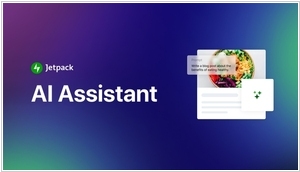
Automattic has introduced an AI assistant for the widely used content management system Wordpress.com. Now, when composing a post or page, users have the option to incorporate an "AI Assistant" block into their content. By inputting prompts in natural language, users can avail themselves of the AI assistant's text generation capabilities. Beyond providing content suggestions, the AI assistant can facilitate the creation of organized lists and tables within blog posts. Additionally, it has the ability to adjust the tone of a post, adding elements of informality, skepticism, humor, confidence, or empathy. The assistant can also generate post summaries and propose suitable titles. Initially, the Jetpack AI Assistant block offers a complimentary trial allowing users to submit 20 requests. Subsequently, a subscription fee of $10 per month is required to access this feature.
2021. Automattic acquires analytics company Parse.ly
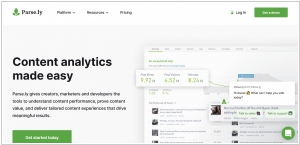
Automattic, the profit-making company associated with the open-source web publishing platform WordPress, has recently completed the acquisition of the analytics provider Parse.ly. Parse.ly equips creators, marketers, and developers with tools to gain insights into content performance, demonstrate its value, and deliver personalized content experiences that yield meaningful outcomes. While WordPress and Parse.ly already exhibit compatibility, the objective is to enable Parse.ly customers to access WPVIP features (enterprise hosting and support for publishers) and enhance the availability of Parse.ly data to WPVIP publishers. Additionally, there exists potential to incorporate more commerce-related data into Parse.ly, considering Automattic's ownership of WooCommerce.
2016. Liferay launched Digital Experience Platform
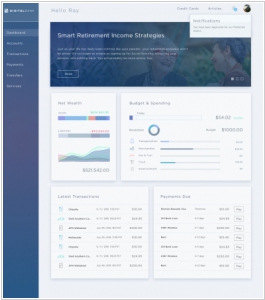
The Open source enterprise CMS provider, Liferay, has introduced its Digital Experience Platform (DXP). This platform is specifically designed to assist companies in creating and managing experiences that facilitate the entire customer relationship. It offers a comprehensive customer view that goes beyond marketing by integrating sales, marketing, support, and service teams. With DXP, companies can develop highly personalized experiences by targeting valuable information, offers, and resources to specific user segments and individuals. It also enables the creation of a unified customer profile that consolidates all interactions and significant data points. Furthermore, DXP provides access to engagement data such as views on video content, click-through rates on targeted materials, community participation, and social metadata.
2016. WordPress.com turned on HTTPS encryption for all sites
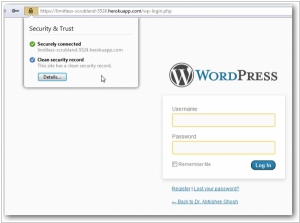
WordPress.com is implementing automatic HTTPS support for all its sites, requiring no user action. Each website is now equipped with an SSL certificate, which is indicated by a green lock in the address bar. Besides the heightened security, this improvement has the added benefit of Google's preference for HTTPS-supported websites over those limited to HTTP. Consequently, your WordPress.com website is expected to achieve higher rankings in Google search results.
2016. Liferay launches Digital Experience platform
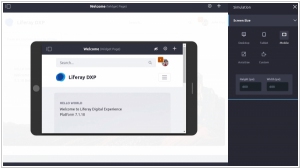
Historically recognized as portal software, Liferay has now ventured into the digital experience market with its latest offering, the DXP (Digital Experience Platform). This strategic shift represents a natural evolution for Liferay rather than a complete departure from its previous trajectory. As stated by Bryan Cheung, the CEO of Liferay, their customers consistently expressed a need for functionalities that went beyond the scope of traditional portal implementations. In response, Liferay would develop or integrate those features, prompting a reevaluation of their position in the market. The Liferay DXP consists of various components, with the portal platform serving as its foundation. The platform includes seamless integrations with numerous backend systems, including CRM, ERP, support, and others. This infrastructure empowers customers to create a wide range of customer experience solutions spanning web experiences, mobile experiences, and even hybrid online/offline experiences throughout the entire customer lifecycle. Please note that while the HTML tags and links were retained, they may not be properly rendered in this plain text format.
2015. WordPress.com goes Open Source and gets a desktop app

The fully hosted version of WordPress, known as WordPress.com, has recently undergone a significant update. The first major change is the complete separation of WordPress.com from the WordPress core. It now functions as an admin interface that interacts with the WordPress core similar to other third-party interfaces and apps. This is achieved through the utilization of a REST API, enabling tasks such as fetching posts, publishing new content, and uploading photos. Secondly, the WordPress.com development team has transitioned to an entirely new stack. Instead of relying on PHP and MySQL, they have built the platform using JavaScript and API calls. Consequently, when accessing the website, the server distributes a fully functional WordPress client that primarily runs within the user's browser. Lastly, the entire system is open source and hosted on GitHub. Additionally, a new Mac app is available for download, offering an alternative way to access WordPress.com. Similar to the Slack desktop app, it harnesses web technologies and desktop features to provide users with a comparable experience to the WordPress.com website, along with extra features like notifications. Windows and Linux apps are currently in progress and will be released in the future.
2015. Liferay partners with Red Hat to provide an open source portal solution
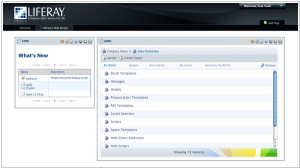
Liferay and Red Hat have joined forces to collaborate on an open-source portal that combines the capabilities of Liferay Portal and Red Hat JBoss Enterprise Application Platform (JBoss EAP). This product specifically targets companies seeking open-source options with enterprise-grade portal solutions. The collaboration also hints at the possibility of integrating with other Red Hat JBoss Middleware products in the future. From a business standpoint, this partnership is intriguing as Red Hat ceased offering new subscriptions to JBoss Portal in February 2015. However, Red Hat will continue to provide support for JBoss Portal until the scheduled end of the current release stream in March 2018. This new venture exemplifies Red Hat's ongoing commitment to the portal market, showcasing their dedication to serving customers in this domain.
2015. WordPress acquired e-commerce plugin WooCommerce

Automattic, the company responsible for WordPress, has made an acquisition by acquiring WooCommerce, the developer of a highly popular e-commerce WordPress plugin. This plugin enables website owners to effortlessly transform their self-hosted WordPress sites into fully functional online stores. With a staggering presence in the online store landscape, WooCommerce powers a substantial number of over 650,000 online stores. While WooCommerce offers user-friendly features, especially compared to other e-commerce solutions, it still requires some assistance during the initial setup process. The demand for easy-to-use shopping solutions is increasingly becoming a key selling point for web-based platforms. Competitors of WordPress.com, such as Squarespace, have integrated storefront modules, and other companies like Shopify, Big Cartel, and Bigcommerce offer hosted solutions to cater to this growing market.
2014. WordPress, Squarespace offer website CMS for Google Apps customers

Website CMS providers, WordPress and Squarespace, have recently become part of the Google for Work Partner Program, offering users access to two highly flexible content management systems (CMS) tailored for small businesses. The Google for Work Partner Program already includes website building services such as Wix, Weebly, and Bluehost. The program's core services encompass popular tools like Gmail, Hangouts, Calendar, Google+, Drive, Docs, Sheets, Forms, Slides, Sites, Admin, and Vault. The integration of Squarespace and WordPress with Google for Work provides users with user-friendly content management solutions, efficiently addressing their daily requirements. Furthermore, the integration process with these platforms is made simple through the availability of APIs, enabling seamless incorporation of Google Apps into their interfaces.
2014. Microsoft makes scaling WordPress on Azure easier
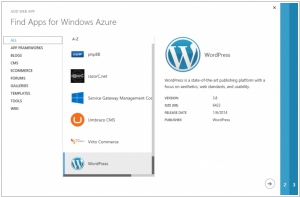
WordPress is widely recognized as one of the leading web content management systems for the Enterprise. However, when it comes to scaling up for high-traffic websites, it can pose challenges. To address this, Microsoft has been providing the option to effortlessly establish a WordPress site using Azure Websites. Now, Microsoft takes it a step further by introducing a highly scalable solution. Azure users can navigate to Azure's App Gallery and deploy what Microsoft refers to as "Scalable WordPress." This process involves a few simple clicks, setting up Azure Storage to store all media assets, and granting access to a curated collection of performance-optimized WordPress plugins. Unlike the standard WordPress installations on Azure, this solution utilizes a higher-end (and pricier) MySQL database. WP Engine and Pantheon are among the recent entrants in offering specialized WordPress hosting services. Unlike Azure, these platforms provide a fully managed service. Nonetheless, Microsoft aims to attract businesses that are capable and willing to manage their own WordPress installations by simplifying the setup of a scalable version on its platform.



